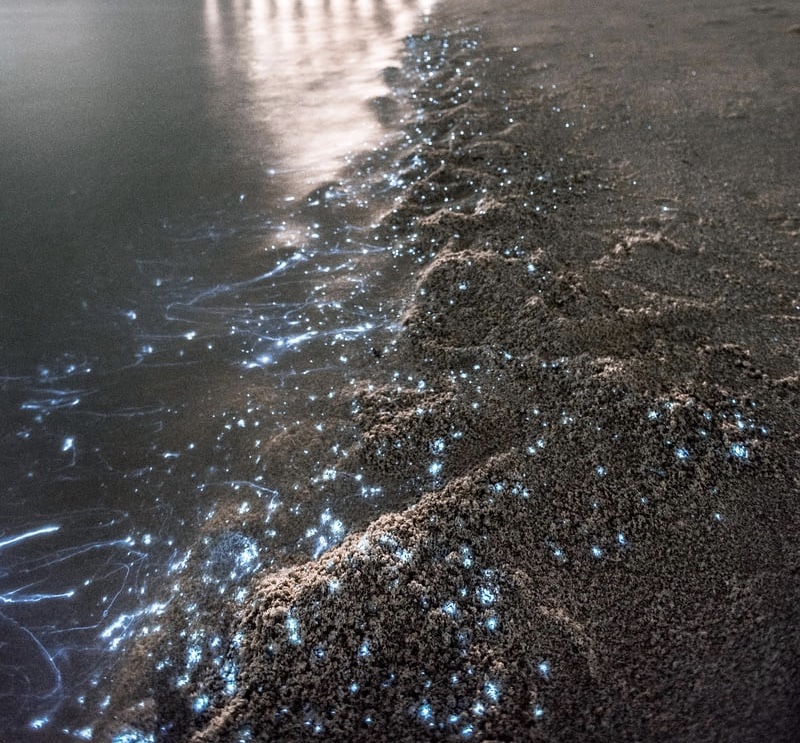MALIBU—On Sunday, May 3, bioluminescent waves crashed upon Malibu shores after appearing in countless other locations along the coastline of Southern California.
“We first went to Westward Beach, then to the end of Zuma, with no luck,” Michael Kory, Malibu resident, informed Malibu Surfside News. “We doubled back down to Dan Blocker Beach and lucked out. Not only were the waves glowing, but out past the swells we could see flashes of the blue glow rapidly moving in lines – clearly, fish or dolphins swimming.”
For over a week, a huge algae bloom as long as the coastline has caused luminous blue waves to crash upon shorelines at night. The bloom, which is called a ‘red tide’ because it causes seawater to turn red-brown, is of the dinoflagellate Lingulodinium polyedra, according to UCSD’s Latz Laboratory in the Scripps Institution of Oceanography. It is bioluminescent, meaning it emits light biochemically, and the waves also glow brighter when splashing or wave-crashing occurs.
In a Q&A session with the Scripps Institution, Scripps scientist Michael Latz noted that “an Imaging Flow Cytobot a few miles off the Scripps Pier detected the bloom starting the end of March 2020.”
Red tides are well-known for being extremely volatile, so it remains unknown if they will last much longer. The phenomenon does not occur annually either, as Kory proved: “I’m a native Angeleno and have lived in Malibu since 2006, and this is the first time I’ve ever experienced anything like this. It was also the first time we’ve left the house at night since the lockdown started.”
The tides also release a pungent sulfury odor, as reported by the Latz Laboratory. However, the smell should vanish soon, since the end of the phenomenon is reportedly near due to the deteriorating health of the Lingulodinium polyedra.
Latz noted that “red tides of Lingulodinium polyedra have been monitored by Scripps Oceanography scientists since 1900 by taking water samples. This effort continues thanks to SCCOOS and the Shore Stations water sampling program.”
More details on the tides published by the Latz Laboratory can be found here, and the full Q&A Session with Latz can be viewed here.






